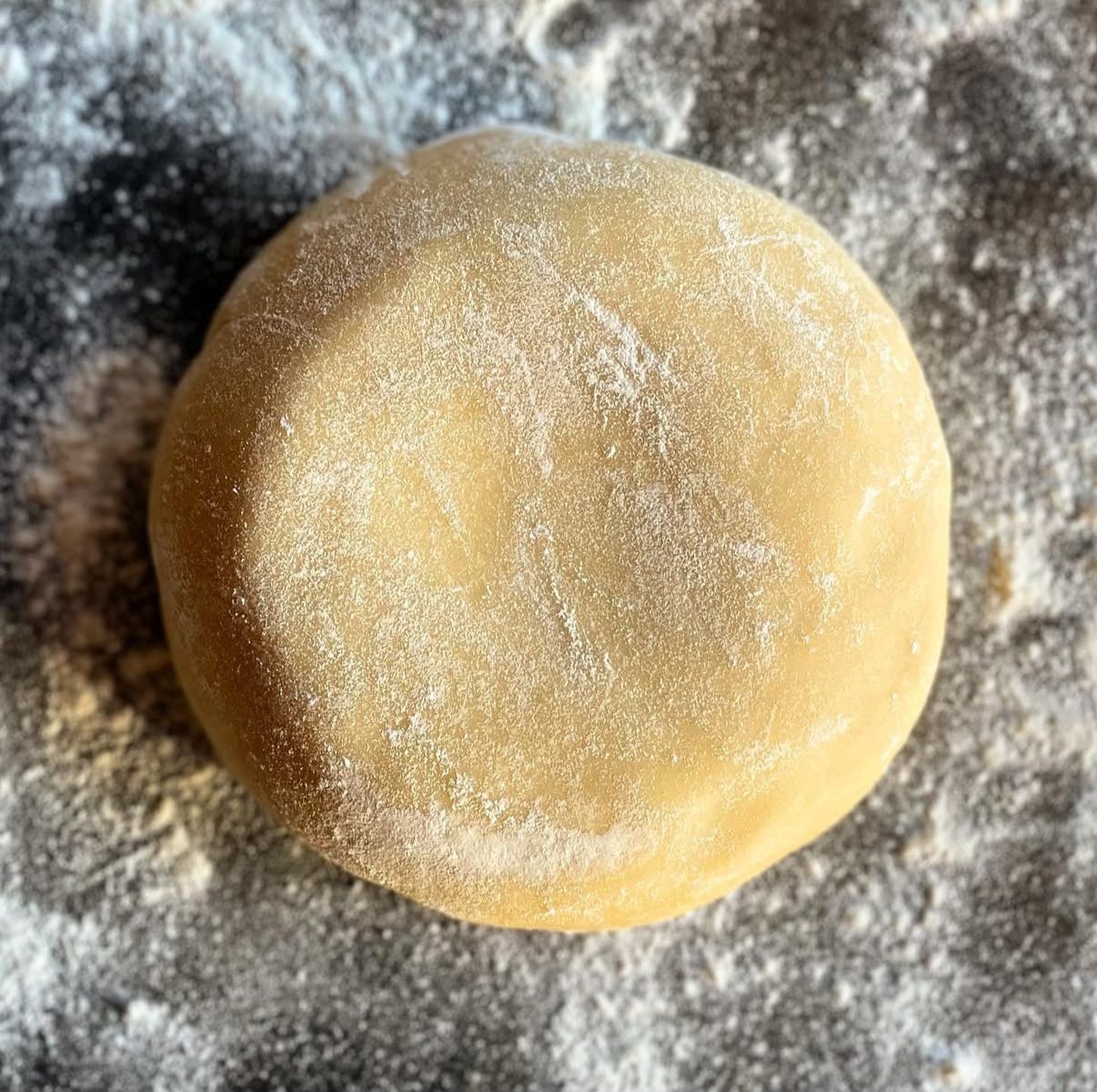Bonjour and welcome to this recipe no. 27.
Start the day before serving.
This recipe may look long and complicated, but don’t be fooled: it’s actually very simple. The reason I go into so much detail is that food blogs often skip important steps. With my instructions, you should get it right on the first try.
Ingredients
I often use a 24 x 3.5 cm (9 ½ x 1 ½ inch) ring mold. If you have a smaller one, that works too. And if the sides are higher, that works just as well.
250 g (2 cups) all-purpose flour (type 55 or 65)
125 g (½ cup + 2 tbsp) butter, diced
1 pinch of salt
1 egg yolk (optional, for flavor)
4 to 6 cl (3–4 tbsp) cold water
The day before: making the dough
Sift1 250 g (2 cups) of flour into a bowl. Add 125 g (½ cup + 2 tbsp) of butter, cut into small pieces, and a pinch of salt. Then mix everything together until you get a crumbly texture.
Add the egg yolk (optional), then pour in 4 to 6 cl (3–4 tbsp) of cold water. Gather the dough with your hand, squeezing it in your fist: it should come together and press out between your fingers. Repeat this motion until you can form a smooth, even ball of dough.
Wrap the dough in plastic wrap and let it rest in the fridge overnight.
The next morning: rolling out and lining the dough
Here’s a video to show you how to roll out the dough2 and then line the tart pan.3
Take the dough out of the fridge about an hour before handling it.
Lightly flour the work surface, the dough, and the rolling pin.
Place the rolling pin in the center of the dough and gently roll it out toward the edge without pressing too hard. Keep your hands flat, one on each side of the pin. Don’t push the pin: move it back and forth smoothly.
Rotate the dough a quarter turn each time, then continue rolling. Keep going until the dough is large enough to cover your tart pan.4
Take a tart ring5 or pan and line it with a sheet of parchment paper.6
Carefully lift the dough with your hands and place it into the pan.
With your thumbs, gently press the dough against the sides to help it hold. Try to keep the edge slightly thicker than the base.
Run the rolling pin across the top to cut off any excess dough.
Prick the bottom all over with a fork.
Finally, place the tart shell in the freezer for 15 minutes, or in the top of the fridge for 30 minutes if your freezer is too small.
Pre-baking the pastry shell
Preheat your oven to 180 °C (350 °F).
To prevent the edges from collapsing: cover the dough with a sheet of parchment paper, then fill it all the way to the top with baking beans (or rice, chickpeas, dried beans, etc.).7
Bake the tart shell for 10 minutes. Remove it from the oven and carefully take out the parchment paper and the weights.
If the dough has sagged slightly in places, use the back of a small spoon to gently press it back into shape along the edges.
Return it to the oven for another 5 minutes, until it takes on a nice golden color.
Once out of the oven, let it cool at room temperature before using. You will unmold it during the second baking, once the filling has cooked inside.
Sift the flour for a finer, smoother dough. If you don’t have a sifter, just pour the flour directly into your bowl: the dough will simply be a little denser.
Rolling out the dough means flattening it with a rolling pin to the right thickness.
Lining the pan means fitting the rolled dough into the tart pan so it hugs the edges.
Always lightly flour the dough, the rolling pin, and the work surface (under the dough) if it starts to stick.
If you’re using a pastry ring, make sure to place it on a baking sheet lined with parchment paper: it will act as a support. The dough won’t hold in a ring by itself, and if you try to move it without support, the tart shell may break.
Lining with parchment paper makes unmolding easier. Cut a sheet slightly larger than your pan. Place it inside, pressing and crumpling it gently with your fingers so it fits snugly against the bottom and sides. Leave a little overhang all around: this will act as handles to lift out the tart shell once baked.
This trick prevents the sides from slumping and keeps the base from puffing up.



